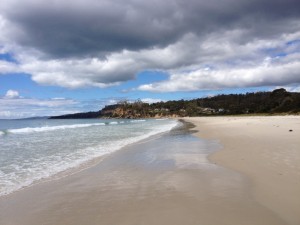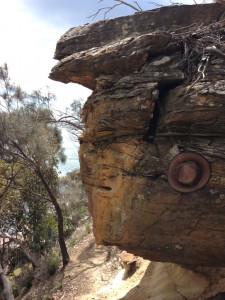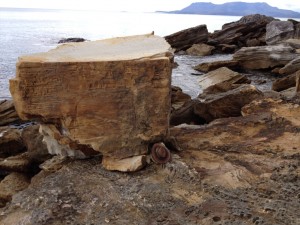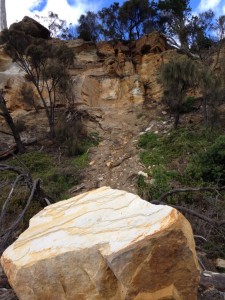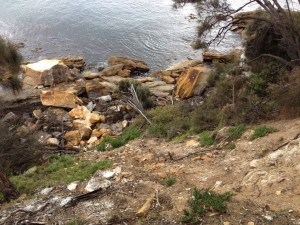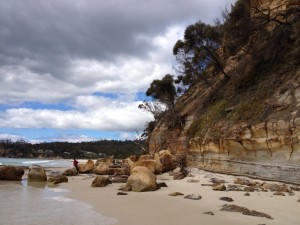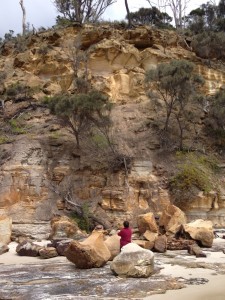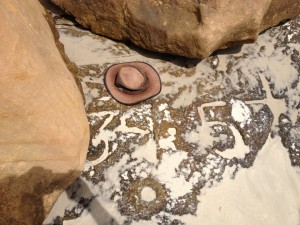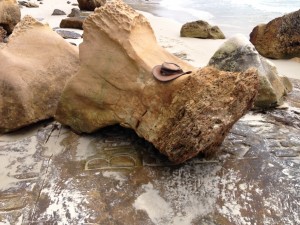Our shack at Spring Beach in eastern Tasmania is on a coastal cliff of Triassic-age sandstone. We’ve been holidaying there for 35 years, and though sand and silt and small pieces of stone fall every day from the cliff, I’ve never seen a bigger rock fall than this one. And I wasn’t there when it happened (!) – sometime between April and June 2013. Lucky no-one else was there either (if you were, and you’re still alive, let me know!).
The boulder is a cube of sandstone at least two metres on a side. With a density of about 2.5 tonnes per cubic metre, that’s about 20 tonnes in all. A few extra tonnes fell as a swag of smaller pieces.
The cliffs at Spring Beach recede slowly this way, and so do most cliffs, coastal or otherwise. Rockfalls (“geohazards”) are natural.
It was a nice fall – worthy of attention. The other reason I mention it is that it helps people like me try and work out how often falls like this happen. Then we can estimate risk to people. In itself, the single rock fall is not much help, but when added to other rock falls from the other end of Spring Beach, a picture starts to build up. At this other end, holidaymakers carved their names in the sandstone shore platform at the base of 30m sandstone cliffs back in the 1950s (where are they now?). Since our family noticed these back in the 1970s, when the names were half their age, they have been partly covered by boulders fallen from the cliff. (Smaller stuff gets quickly washed away by waves, but the 2 – 3 tonne boulders here are harder to shift.)
So, in 50 years or so, half a dozen boulders big enough to kill people have fallen from the Spring Beach cliffs — say, one a decade on average. The chances of a person being hit by one of these missiles is very low — we would have to say acceptably low — so I’m not about to suggest we close Spring Beach to the holidaying public just yet. Or ever.
